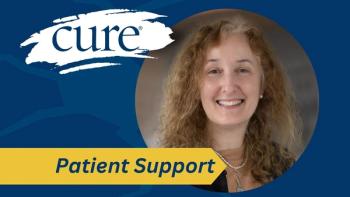
Quality-of-Life with Systemic Therapies in Metastatic Clear Cell RCC
A look at how to consider quality-of-life clinical trial and patient-reported data when treating clear cell renal cell carcinoma with combination therapies.
Episodes in this series

Chung-Han Lee, M.D.: Continuing on this trend of talking about side effects, a lot of these studies from the large phase 3 clinical trials have included quality-of-life data. What was your take on some of these quality-of-life data and how that weighs into how you approach patients?
Kiran Virdee, R.N., BSN, CCRN: Thank you, Dr. Lee. When we look at clinical trials and either the TKI [tyrosine kinase inhibitor]-IO [immunotherapy] combination, such as the CLEAR trial, or the IO combination, as in CheckMate 214, quality-of-life data are collected from patient-reported outcomes, where patients quantify an assessment of how they feel. This entails from a disease standpoint as well as from toxicity related to the treatments that they’re on. These assessments come directly from the patients. There’s no clinician involvement. The patients themselves complete surveys to assess how they’re feeling.
When we do these quality-of-life assessments, there are a lot of caveats that can go into this. There may be certain information that might not necessarily be captured based on how these surveys are designed. The quality-of-life assessments talk about the average patient. It gives everyone an equal weight and might underestimate the quality of life for patients who experience rare events that could lead to other complications. In medicine and our practice, we tend to have a greater weight on those rare side effects, because we have seen firsthand the complications that can occur, such as adrenal insufficiency, which we talked about earlier, and other side effects.
In clinical practice, there’s an unpredictability in how patients will respond from a toxicity standpoint. The quality-of-life curves that we see in the trials may not be as meaningful because individuals are so unique in their response to treatment. We generally draw from our own personal experiences with patients and use that to help with their treatment and quality of life. One thing that we can say about the combination treatments themselves from the CLEAR and CheckMate 214 trials is that being on a combination treatment doesn’t necessarily mean that you’ll have worse or increased side effects. That’s one thing that we can identify.
Transcript edited for clarity.









